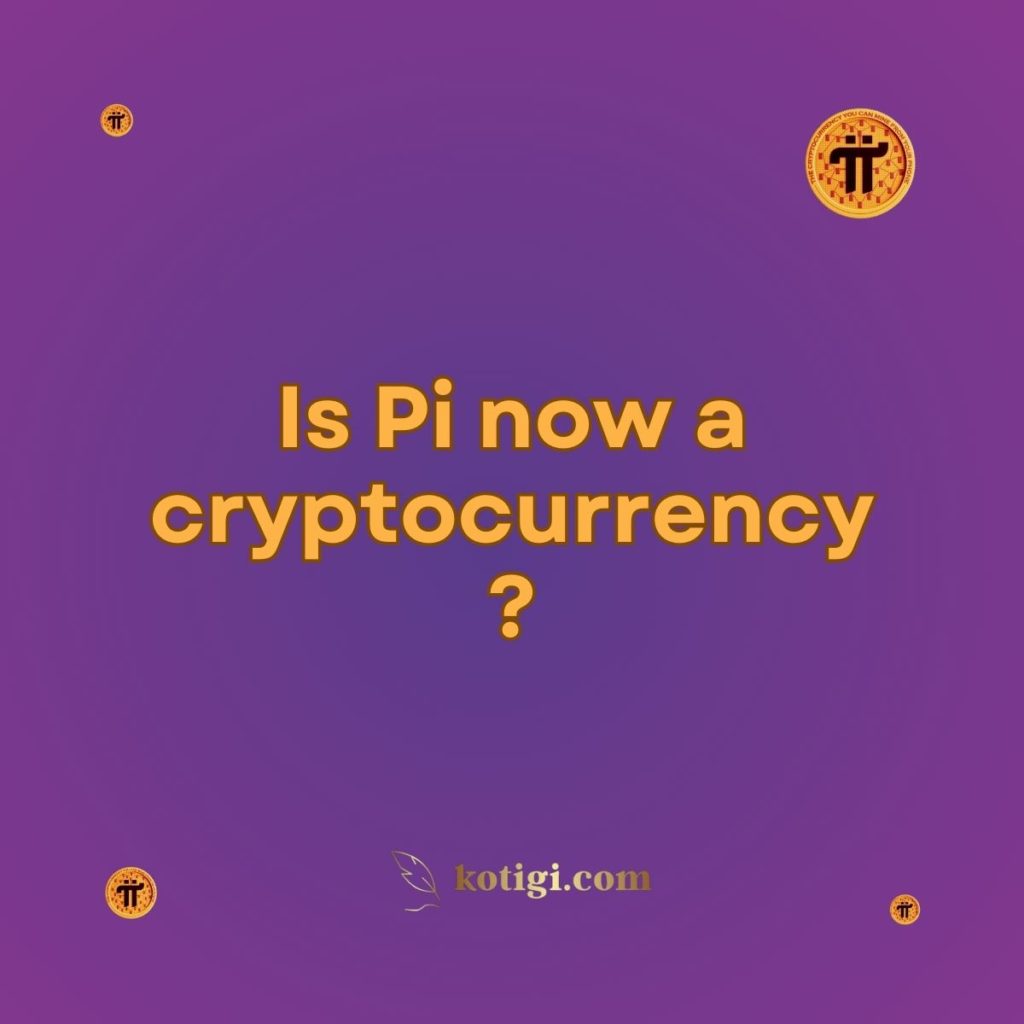
Is Pi now a cryptocurrency?
As of now, Pi Network is not yet a fully functional cryptocurrency on the open market. It is still in its developmental phase, specifically the enclosed mainnet phase, where it cannot be traded or used as a traditional cryptocurrency.
Introduction
With millions of users actively participating in the Pi Network, many wonder if Pi Coin has officially become a cryptocurrency. The term “cryptocurrency” implies that a digital asset can be traded, used for transactions, and has value in the open market. To determine whether Pi Coin qualifies as a cryptocurrency, we need to examine its current status, functionalities, and future prospects.
Current Status of Pi Network
Development Phases of Pi Network
Pi Network, launched in 2019 by a team of Stanford graduates, has gone through various stages of development. Currently, it is in the enclosed mainnet phase, which means:
- Pi Coins Cannot Be Traded Externally: Pi cannot be sold or exchanged on public cryptocurrency exchanges at this stage.
- Internal Transactions Only: Pi coins can only be transferred and used within the Pi Network. This is a testing phase to ensure network security and functionality.
The project aims to transition through these phases:
- Beta Phase: Initial mining and network setup.
- Enclosed Mainnet Phase: Testing with internal transactions and KYC verification.
- Open Mainnet Phase: Public trading and broader adoption.
KYC Verification
One of the critical steps before Pi can be considered a fully functional cryptocurrency is the completion of the KYC (Know Your Customer) process. This verification ensures that the network is secure and that coins are distributed to real individuals. KYC is a prerequisite for enabling external transactions and trading.
Characteristics of a Cryptocurrency
Key Features of Cryptocurrencies
For an asset to be classified as a cryptocurrency, it typically possesses the following characteristics:
- Digital Nature: It exists only in digital form and is secured by cryptographic methods.
- Decentralization: It operates on a decentralized network or blockchain.
- Tradeability: It can be bought, sold, or exchanged on public or private markets.
- Utility: It can be used for transactions, investments, or as a means of accessing services within a specific ecosystem.
Pi Coin’s Current Features
- Digital Asset: Pi Coin is indeed a digital asset created and managed by the Pi Network.
- Decentralization: While Pi Network aims to be decentralized, it is still in the process of achieving this goal. The network is currently controlled by its development team.
- Limited Tradeability: Pi Coin is not yet tradable on public exchanges, limiting its status as a fully functional cryptocurrency.
- Utility: Pi Coin is used for transactions within the enclosed network and can be spent on goods and services within the Pi ecosystem, but it has no utility outside of this environment yet.
When Will Pi Become a Full Cryptocurrency?
Transition to the Open Mainnet
Pi Network’s transition to the open mainnet will be a significant milestone for Pi Coin. This phase will mark the point where:
- Pi Coins Can Be Traded Publicly: Users will be able to buy, sell, and exchange Pi on cryptocurrency exchanges.
- Wider Adoption: Pi will be integrated into various services and platforms, increasing its utility and value.
Factors Affecting Transition
Several factors will influence when Pi Coin becomes a fully functional cryptocurrency:
- Completion of KYC: A substantial portion of users must complete KYC verification before moving to the open mainnet.
- Network Stability: The network must be secure and capable of handling external transactions.
- Ecosystem Development: A functioning ecosystem of apps and services that accept Pi will enhance its value and usability.
Current Limitations and Concerns
Trading Limitations
Currently, Pi Coin is not listed on any cryptocurrency exchanges, and its trading is restricted to the Pi Network’s internal transactions. This limitation prevents Pi from being recognized as a fully functional cryptocurrency in the broader market.
Speculation vs. Reality
Speculation about Pi Coin’s future value and utility exists, but it’s essential to differentiate between speculative predictions and actual functionality. The coin’s value and functionality will only be realized once it is listed on exchanges and adopted widely.
Security and Privacy Concerns
As with any cryptocurrency project, concerns about security and privacy are relevant. The Pi Network team is working to ensure that user data and coins are protected, but users should remain cautious and informed about potential risks.
Future Prospects
Potential for Growth
If Pi Network successfully transitions to the open mainnet and gains significant adoption, Pi Coin has the potential to become a widely used cryptocurrency. The project’s success will depend on:
- User Adoption: More users must adopt and use Pi Coin.
- Integration: Pi must be integrated into various platforms and services.
- Market Demand: There must be demand for Pi in the open market.
Long-Term Vision
Pi Network’s long-term vision includes creating a decentralized cryptocurrency that is accessible to the general public. The team aims to build a robust ecosystem around Pi Coin, enhancing its value and utility.
Conclusion
As of now, Pi Coin is not yet a fully operational cryptocurrency. It is still in the enclosed mainnet phase, with limited functionality and no public trading. The project’s transition to the open mainnet and successful completion of KYC verification are crucial steps toward becoming a recognized cryptocurrency.
Pi Coin has the potential to become a significant player in the cryptocurrency space, but its current status limits its recognition as a fully functional cryptocurrency. Users should stay informed about Pi Network’s developments and be patient as the project progresses towards its goals.
Key Takeaways:
- Pi Coin is currently in the enclosed mainnet phase and is not yet publicly tradable.
- The transition to the open mainnet will allow Pi to become a fully functional cryptocurrency.
- Key milestones include completing KYC, ensuring network stability, and developing a robust ecosystem.
- Pi Coin’s future as a cryptocurrency depends on its successful transition and adoption in the market.





